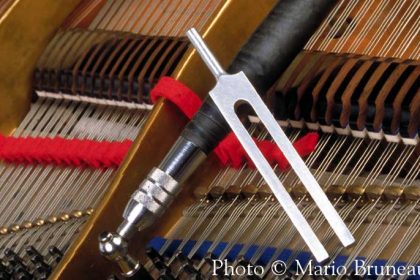
Many thanks to the commentators “the all knowing” here is a super course about the physics of sound.
This is a video every aspiring piano tuner should listen carefully. This video last more than an hour but is mandatory for any aspiring piano tuner.
Every musician should also look at this video very seriously.
Have you ever wondered about the annoying hum your car makes at a certain speed on a particular stretch of highway? Or why a flute’s notes are higher than a trombone’s? Walter Lewin uses rubber hose, wooden boxes with holes, metal plates and an assortment of other home-made instruments to demonstrate how objects produce sound. It all boils down to how something vibrates — pushing air out in all directions.
Lewin illustrates the shape of sounds, taking a rope tethered at one end, shaking it up and down at different speeds and producing specific wave shapes. These shapes are the rope’s resonant frequencies, or harmonics. It’s the same for a bowed violin, where the oscillations of the strings generate a set of harmonics, producing the notes we hear — the faster the oscillations, the higher the tones. Lewin invites children from the audience to produce sounds with their musical instruments, and shows the amplitude and frequency of the tones. Later he demonstrates destructive resonances: video of a bridge that twists so violently that it collapses, and then, live in the laboratory, the shattering of a wine glass with progressively louder and higher tones. In this event where physics meets performance art, Lewin provides surprises throughout.



